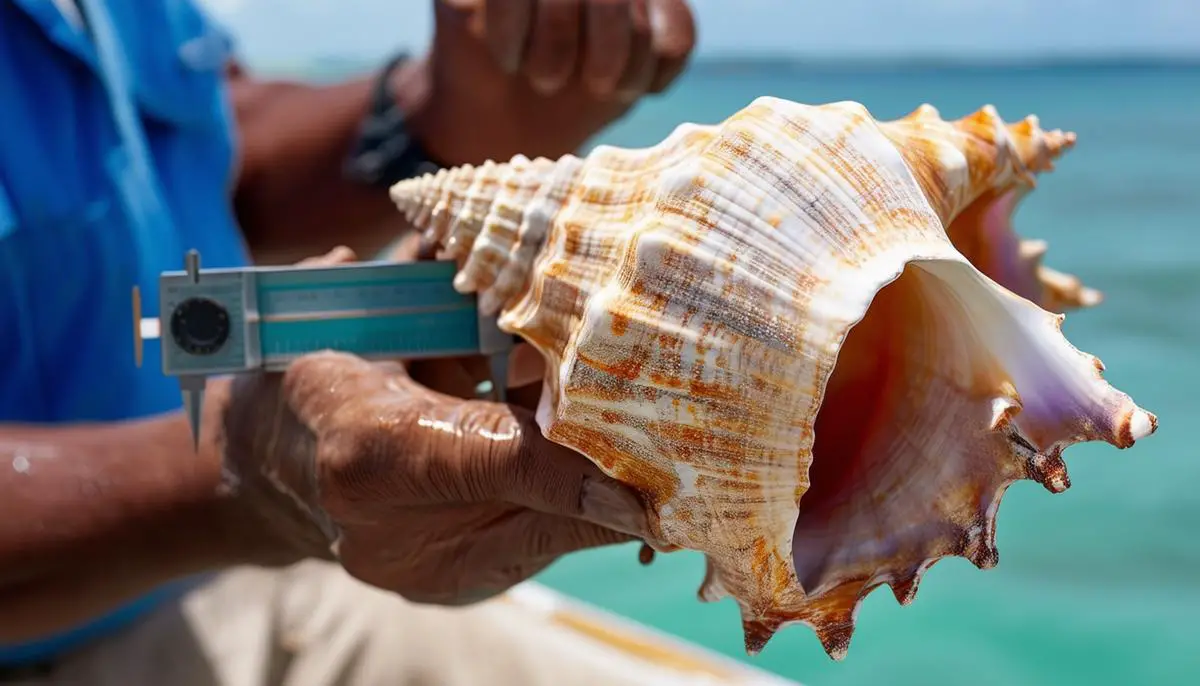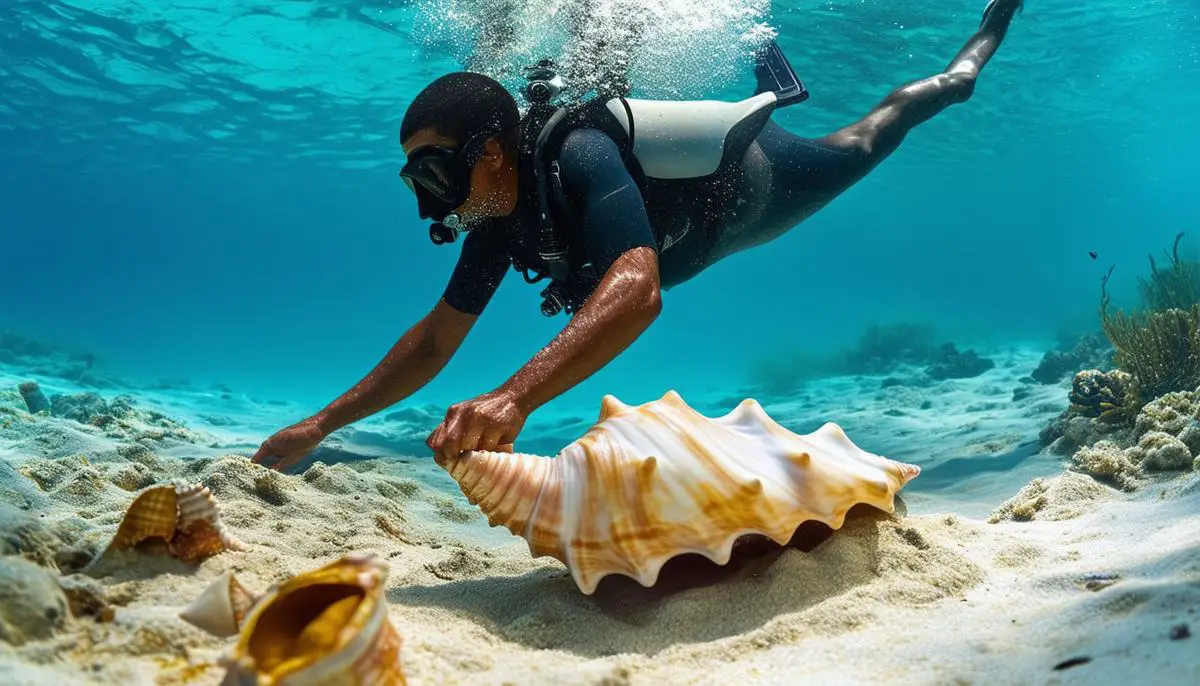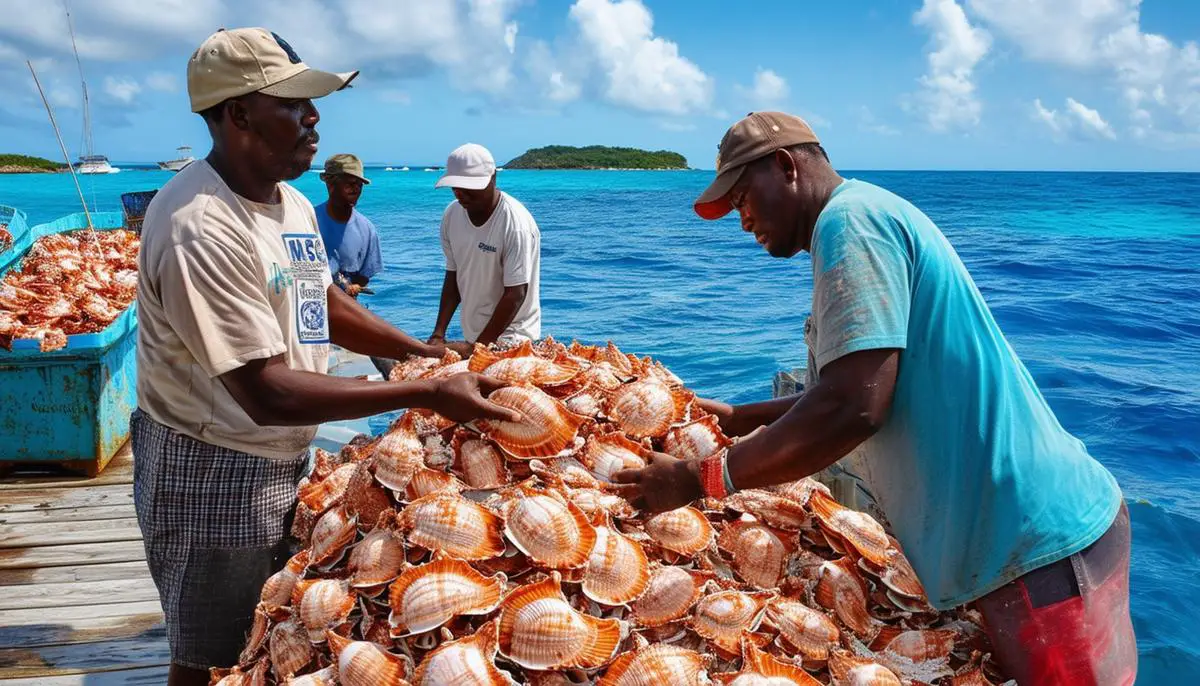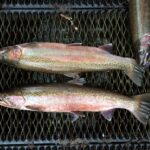Understanding Conch Maturity
Queen conch, those gorgeous marine snails adorning the Caribbean waters, have a thing about growing old gracefully—with a thick shell that screams "mature". When you're fishing for these beauties, knowing when they're all grown up is crucial. Why? Because younger conch with thinner lips haven't hit their breeding prime yet. Sustainable fishing depends on letting these younger conch hang around the seabed a bit longer to ensure future generations.
So, how thick should a conch's shell lip be before it joins the catch of the day? Fifteen millimeters is the magic number. Fishermen now use this measure as a concrete rule to gauge whether it's ethical, and legal, to harvest a conch.
If you're diving in those crystal-clear waters scouting for conch to sell, cook, or turn into a quirky piece of décor, having a keen eye to spot mature ones also means fewer clashes with local environmental laws.
The stringent guidelines aren't just there to boss fishermen around. They're shaped out of a necessity, as sustainability isn't just a buzzword but a real call to protect our ocean's balance. Remember, those conch shells play an important role—they're herbivores grazing undersea lawns, far from being just another fast-food item on the ocean's menu.
Impressively, each conch has a life cycle capable of spanning four decades1. A considerate fisher respects these timelines and helps maintain a marine equilibrium, nurturing the numbers needed to sustain both industry and oceanic biodiversity.
Adapting practices such as looking for proper shell development before capturing, education from experts to fishermen about sustainable capture methods, and penalties for premature harvesting contribute immensely to the longevity of conch populations.
For the curious diver or fisher, observing these snails right where they belong—flaunting pinkish interiors through semi-buried hides in sandy marine gardens—presents a rich experience. So the next time you're wading through Caribbean blues, make sure to court mature conch—they make a grand addition not only to your palate but also to the perpetuity of marine life.

Sustainable Fishing Techniques
Diving into sustainable fishing, let's talk about techniques that really get to the heart of responsible conching—like free-diving and hand-gathering. These aren't just terms thrown around; they're real methods used by fishermen who respect the sea and its inhabitants.
Instead of casting huge, indiscriminate nets or relying on disruptive gear, these eco-minded folks plunge into the waters free-style or with minimal dive gear. Wearing just their fins, masks, and maybe a snorkel, they scour the ocean floor. The goal? To selectively approach those mature Queen conch, ensuring the juveniles can continue their growth without disruption.
Why this hands-on approach? It's about precision and care. By physically choosing which conch to gather, divers avoid the unintended catch of non-target species or undersized juveniles. This selective picking is about following fishing laws and preserving future generations of these creatures. Each conch left behind gets another day to grow, reproduce, and contribute to a thriving marine ecosystem.
Another benefit of these methods is minimizing environmental impact. Free-diving and hand-gathering have virtually no carbon footprint. Conch harvesters aren't muddying the waters with engine oil or stirring up the sediment. It's fishing with finesse—a careful extraction that leaves the seabed largely undisturbed.
This hands-on technique lends an incredible precision to sustainable practices. The care in this approach highlights a harmony between making a living and giving back to the marine world.
Embracing such methods is like a nod of respect to the ocean, ensuring that generations of seagoers—both human and mollusk—can enjoy pristine underwater worlds.
Just think—each free-dive comes with a fresh haul and tales of human connection with the deep sea. And hand-gathering? It's carefully curating nature's offerings, one mature sea dweller at a time. So next time you don your dive gear, remember—you're part of the effort to keep our oceans thriving. Isn't that a catch worth diving for?

The Role of MSC Certification
The importance of the Marine Stewardship Council (MSC) certification is multi-layered, with a whole lot of promise for our oceanic friends. MSC certification isn't just a badge that fisheries stick on for bragging rights. This label symbolizes adherence to rigorous, science-based standards ensuring sustainable fishing practices. It tells conch lovers around the globe that their delicious meal was harvested without hurting the balance of our marine ecosystems.
For a fishery to earn this certification, it must score high on sustainable management and environmental impact. It takes a deep dive into ecology, often calling for changes in the way fisheries operate. We're talking:
- Redefined fishing methods
- Gear restrictions
- Controlled fishing seasons
- Quotas that ensure future populations can thrive
Think global impact. When you see MSC's blue tick on a menu or at your grocery store, it's telegraphing practices that span oceans and nurture fishing communities. Internationally, this seal of approval boosts market access. It's like a pass into the ecolabel club where doors open for exporters, especially in markets attuned to sustainability, such as the European Union. MSC-certified products often fetch premium prices, proving that being kind to our marine life can also be financially savvy.
Let's focus on local economies. For coastal communities centered around fisheries, the MSC certification can be a game-changer. It preserves jobs and can stabilize—if not increase—sales with its global appeal. In regions like the Caribbean, where conch is king, this can mean steadier incomes for those who depend on fishing.
Significantly, sporting the MSC certification can inspire others to strive for sustainability. It helps build community pride and drives a collective mission towards healthier seas.
Still, achieving MSC certification isn't easy. It demands rigorous checks, balances, transparency, and a lot of commitment. Like all great tales of the sea, the journey towards MSC certification is dotted with challenges and triumphs.
In a world that's increasingly conscious about our impact on the planet, MSC serves as a guide. It's heartening to see eco-warriors, foodies, and economists all cheering for the same cause. So, the next time you enjoy a piece of MSC-certified conch, remember – you're not just savoring a delicacy; you're supporting progress. If that's not worth diving for, what is?

In essence, by adhering to sustainable fishing practices such as targeting only mature conch with sufficiently thick shell lips, we not only comply with legal standards but also contribute to preserving oceanic biodiversity. This approach ensures that future generations will continue to enjoy both the environmental and economic benefits derived from these remarkable marine inhabitants.
- Strombus gigas. The IUCN Red List of Threatened Species. Version 2022-1.



Welcome to our blog!